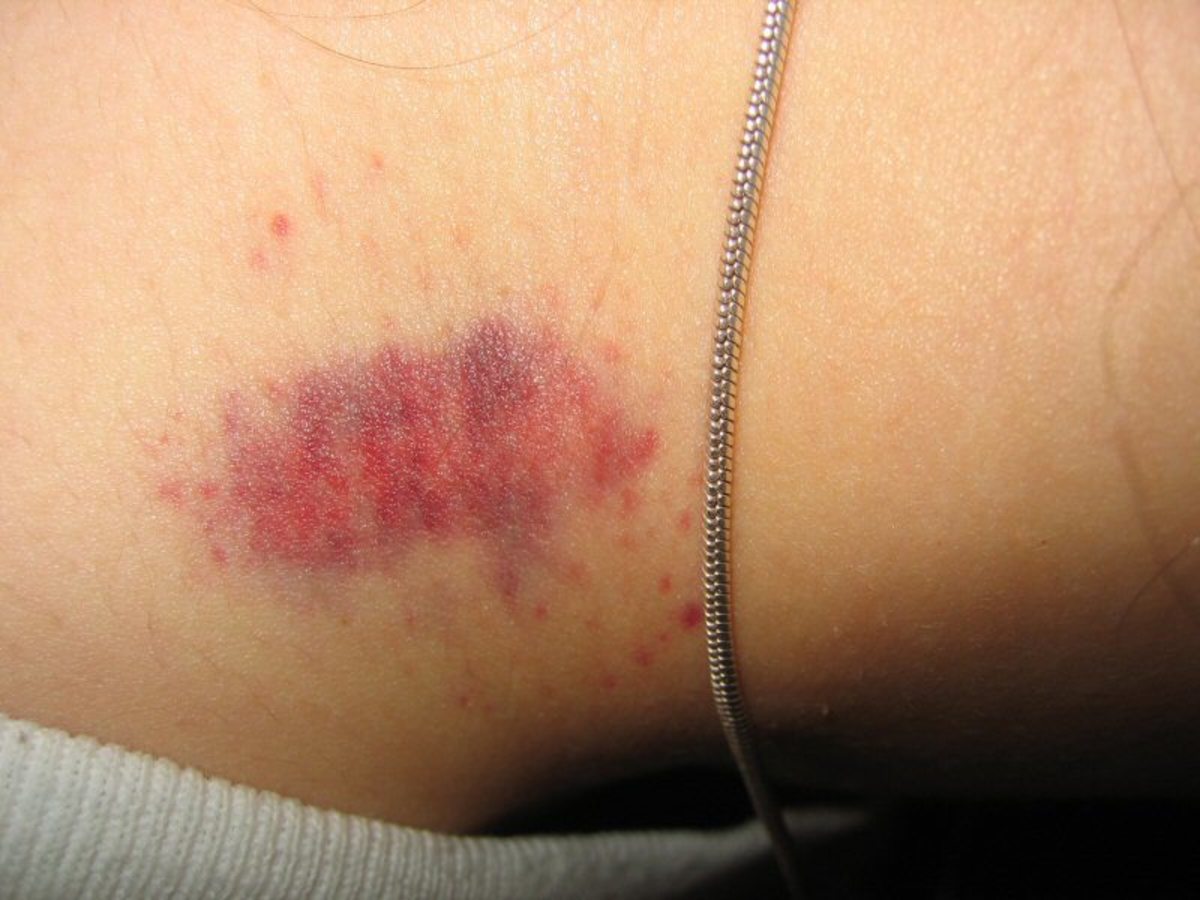We’ve all been there, the moment of mortification when a red mark appears on our skin, a telltale sign of a passionate encounter or a clumsy bump. But is it a hickey or a bruise? The distinction might seem obvious, but both are discoloration of the skin, caused by ruptured blood vessels. Understanding the difference between these seemingly similar marks can help you navigate the social awkwardness and determine the best course of action for treatment.

Image: discover.hubpages.com
My own introduction to the world of hickeys came during a particularly adventurous teenage phase. A seemingly harmless smooch quickly turned into a embarrassing crimson mark on my neck, sending me scrambling for cover-up and explanations. Despite my best efforts, the telltale hickey refused to vanish overnight, leading to numerous awkward encounters and hushed whispers. That’s when I decided to delve deeper into the fascinating world of hickeys and bruises, learning how to differentiate these skin marks and, more importantly, how to best manage them.
Unveiling the Mystery: Hickey vs Bruise
Hickeys and bruises, despite sharing a similar visual appearance, are distinct in their origin and characteristics. Both result from the rupture of blood vessels beneath the skin, leading to a pooling of blood. However, the force and location of the trauma differ, resulting in their unique attributes.
A hickey, also known as a “love bite”, is a specific type of bruise caused by suction on the skin. The intense sucking pressure created during a passionate kiss ruptures capillaries underneath the skin’s surface, leading to the characteristic purple or reddish discoloration. The location of the hickey is often a telltale sign of its origin, typically appearing on the neck, shoulders, or décolletage.
Bruises, on the other hand, are caused by a direct impact or trauma to the skin. They are more likely to occur from falls, accidents, or sports-related injuries than from passionate embrace. The force of the impact damages the blood vessels, causing bleeding under the skin. Depending on the severity of the impact and the individual’s blood clotting ability, the bruise can range in color from red and purple to blue and yellow. As the blood is reabsorbed by the body, the bruise changes color over time, gradually fading away.
Key Differences: Dissecting the Hickey and the Bruise
To better understand the difference between hickeys and bruises, let’s delve into their key characteristics, comparing them side-by-side:
| Feature | Hickey | Bruise |
|---|---|---|
| Cause | Suction from kissing or biting | Direct impact or trauma to the skin |
| Location | Neck, shoulders, décolletage | Any part of the body |
| Shape | Round or oval, often with a defined edge | Irregular or diffuse, depending on the impact |
| Color | Purple, red | Red, purple, blue, yellow |
| Duration | Can last from a few days to a week | Can last from a few days to several weeks, depending on severity |
Navigating the Hickeys and Bruises: Treatments and Prevention
While both hickeys and bruises are generally harmless and resolve on their own, there are ways to manage their appearance and speed up the healing process.

Image: thecontentauthority.com
Tips for Healing Hickeys and Bruises:
Cold Compression: Applying a cold compress, such as an ice pack or a bag of frozen vegetables, to the affected area can help reduce swelling and inflammation. Apply the cold compress for 10-15 minutes at a time, several times a day.
Elevate: If the hickey or bruise is located on a limb, elevating the area above heart level can also help reduce swelling.
Over-the-Counter Pain Relievers: Nonsteroidal anti-inflammatory drugs (NSAIDs) such as ibuprofen or naproxen can also help reduce pain and inflammation associated with bruises.
Arnica: Arnica is a homeopathic remedy that is traditionally used to treat bruises and other injuries. It is available in cream, gel, and tablet forms.
Vitamin K Cream: Vitamin K cream can also help to speed up the healing process of bruises. It is important to note that the effectiveness of Vitamin K creams for bruises is still under debate.
FAQs:
Q: How long does a hickey last?
A: A hickey typically lasts for a few days to a week. However, the duration can vary depending on the individual’s skin type and the severity of the suction.
Q: How to get rid of a hickey quickly?
A: While there is no magical cure for a hickey, using cold compresses, elevating the area, and over-the-counter pain relievers can help reduce its appearance. You can also try covering it up with concealer or foundation.
Q: Are hickeys dangerous?
A: Hickeys are generally harmless and pose no serious health risks. However, persistent hickeys or those that cause pain or discomfort should be checked by a doctor to rule out any underlying conditions.
Hickey Vs Bruise
Conclusion
While the words “hickey” and “bruise” may evoke images of passionate encounters and accidental bumps, understanding the subtle differences between these two forms of skin discoloration can help you better navigate the world of physical markings. Remember, both hickeys and bruises are generally harmless and temporary. By applying the appropriate treatments and taking preventative measures, you can minimize their appearance and speed up their healing process.
Are you interested in learning more about how to treat or prevent hickeys and bruises? Comment below with your questions or thoughts!





